10 Red Flags At A Bar That Bartenders Say Should Have You Running Out The Door
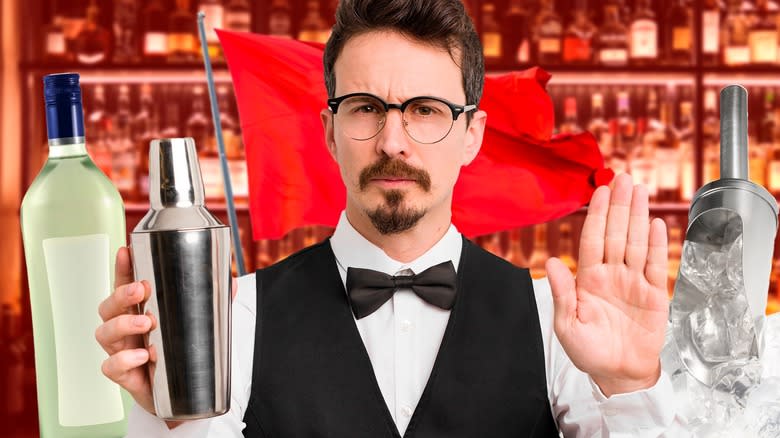
A night out at a swanky cocktail lounge or neighborhood dive bar can be tons of fun. But not all bars are created equal; even the most popular establishments with the longest lines can turn out to, unfortunately, be massively overhyped.
So, how are you supposed to know which establishments are likely to serve a great cocktail and which bars you should stay away from? After all, cool decor and a lot of online exposure may not translate to great-tasting drinks.
To help you figure it out, we decided to speak to some experienced bartenders working in LA and get their take on things. In addition, we looked into what cocktail aficionados had to say online in various forums, poured through other articles covering proper bar service and etiquette, and referenced a ton of personal experience in bars all over the East and West Coast of the U.S. Using all these sources together, here are 10 red flags at a bar that should have you running out the door instead of grabbing a seat.
Read more: The 40 Absolute Best Cocktails That Feature Only 2 Ingredients
The Bartender Places Their Hands Near The Glass Rim

Everyone who has worked a service job knows that the top section of a glass cup is not for bartenders or servers to touch -- it's a well-known saying that the top two-thirds belong to the customer. That means that, for hygiene's sake, your hands shouldn't go anywhere near it. If you see a bartender haphazardly grabbing glasses with their hands at the top before pouring a drink or serving drinks with their fingers near or at the rim, note the red flag and walk out of the bar.
This is a major issue, as fingers are some of the dirtiest parts of the human body. Everything the bartender previously touched will now transfer to the part of the glass you are about to put your mouth on. In addition, it's also evidence that the bar staff isn't very well-trained or experienced, as operating behind a bar without putting your fingers near the rim is Bartending 101.
Dirty Bathrooms
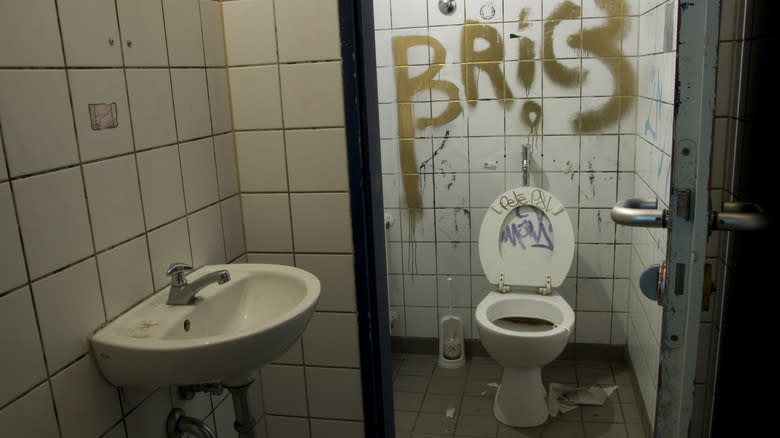
One of the red flags health inspectors look for is a dirty restroom. It's a general warning for pretty much any service-oriented business. The fact is, how well any establishment cleans and maintains its bathrooms reflects the general cleanliness of an establishment. If the bathroom is dirty, it's a pretty good bet that the area behind the bar or any associated kitchen is likely not up to your cleanliness standards, either.
Someone may argue that a very busy bar doesn't have time to properly take care of the restroom, but that's still an indication of the level of service (and cleanliness) you're about to get. If a bar can't keep its bathroom somewhat clean, management either doesn't care or has understaffed the establishment. If the staff can't keep up with the demands of the night, it's very likely they're going to end up cutting corners on other parts of the job as well, such as making the best craft cocktail possible or simply handling things hygienically.
Lukewarm Or Flat Beers
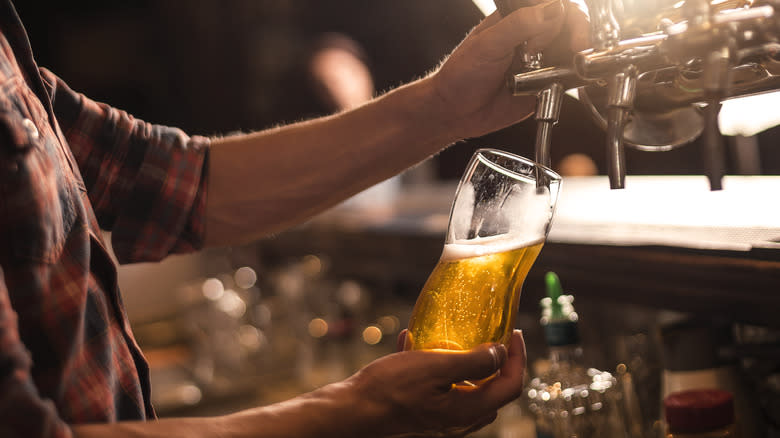
Beer lovers are probably already rolling their eyes at this one, as they know full well the disappointment of expecting a nice cold beer with a slight head of foam and getting a flat, room-temperature beer that's been sitting around for who knows how long instead. The best bartenders -- regardless of what kind of establishment they work at -- should be able to pour a good pint of beer. This is especially true if you're at a craft beer bar, pub, or brewery of any sort.
If a bartender pours you a flat or not-so-cold pint, it likely means the bar has staff that does not know what they're doing, or, even worse, the refrigeration standards aren't up to par. Most bars that serve any kind of draft beer will keep their cellar at a cool but not freezing temperature of anywhere between 50 and 55 degrees Fahrenheit. Bartenders also know other little tips for pouring the best pint of beer possible, such as holding the glass at a 45-degree angle to the tap and not moving the glass around while pouring, so if you're consistently getting less than good beer, this might be the issue.
Bartenders Not Using An Ice Scoop Or Tongs
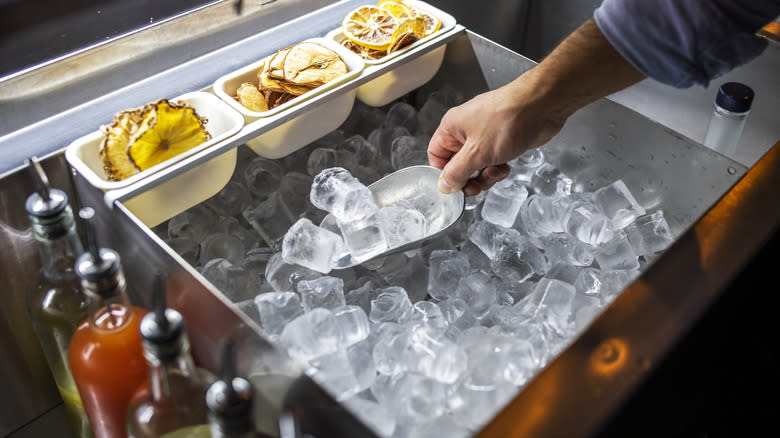
It's probably common sense for most people that a bartender using their hands to scoop up ice for a drink is bad practice. However, did you know that using a glass to scoop up ice is also less than ideal? According to one of our bartending experts, a bartender using a glass to scoop up ice is a major red flag. There are two separate reasons for this.
The first one is a hygiene issue; the bartender may only be touching the lower third of the glass, but if they run it through an ice bucket, they are transferring their germs to the ice, and therefore, to your drink or several other drinks after that. Another problem you may not have thought of can be even more dangerous. Sometimes, the ice is dangerously hard and packed. If a bartender tries to scoop it up quickly using a glass, they can damage or chip the rim of the glass.
If no one notices this before a drink is served, the customer could seriously injure their lip or tongue on a chipped or broken glass rim. Therefore, make sure your bartender uses tongs or an actual scooper to put ice in your drink.
Bartenders Leaving Bar Tools Out And About
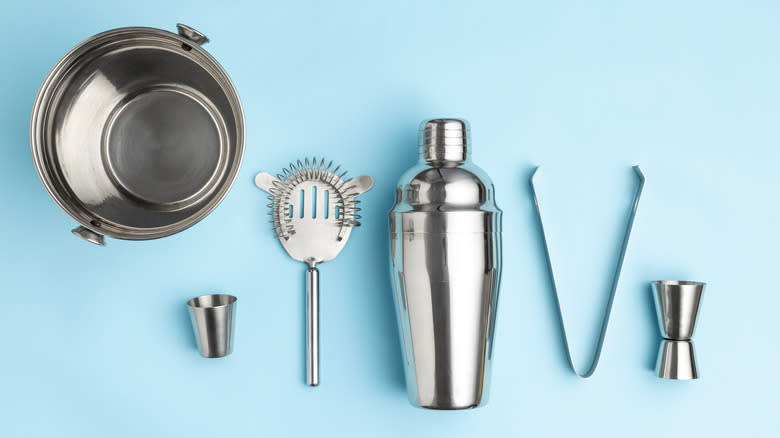
According to one of the bartenders we spoke to, it's a red flag if you see bar tools on the counter instead of thoroughly rinsed and back in their respective places. This indicates that the staff is probably going to be lax with cleanliness and attention to detail. These bartending tools include items like a jigger, a measuring device for small quantities of liquid, a bartending spoon, which is a spoon with a long, narrow stem meant to stir cocktails, and a Hawthorne strainer, which fits within the rim of a glass and is most often used for shaken drinks.
When these items are just left on the bar counter, not only are they likely picking up contamination from that counter, but it also means they haven't been thoroughly washed. It's unlikely a bartender would take the time to wash a tool and then just toss it back onto the surface they're working on. That means whatever cocktail your bartender uses those tools for, they will probably have remnants of some other liqueurs and flavorings in there as well from previous drinks.
The Rule Of Vermouth
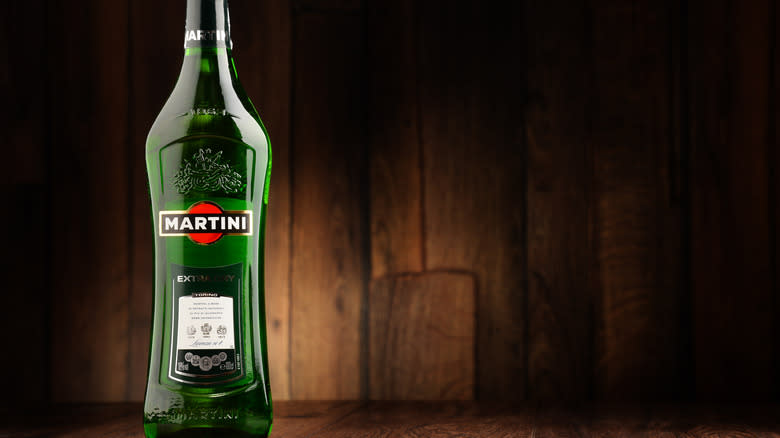
Experienced bartenders know that if they walk into another establishment and see that the staff keeps vermouth on a shelf and not in the fridge, they don't know their stuff. The one exception is if it's a very busy, high-capacity bar, and they're going through their vermouth fast enough to justify this. One Reddit user said, "Bars that treat their vermouth without respect will generally have no idea how to mix drinks."
That's because vermouth is essentially an aromatized, fortified wine, and like wine, vermouth begins to oxidize after it is opened, which will eventually ruin the taste. Keeping the bottle refrigerated helps slow down the oxidization process, allowing the vermouth to last longer. In fact, vermouth kept in the fridge can last up to three months, though it's unlikely any working bar will have to keep vermouth for this long. If that's the case, the bar may have a customer problem.
Low Quality Alcohol For Mixed Drinks
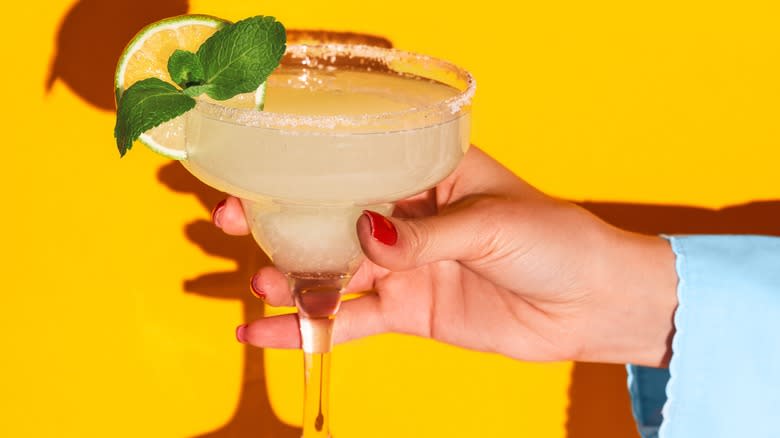
Understandably, bars may not use top-shelf liquor for their mixed drinks; after all, the best of the best is usually intended for neat drinks. What's the point of paying upwards of $100 per bottle for a liquor you're going to dilute with mixers of another flavor? However, the liquors used, whether tequila, gin, vodka, or anything else, should still be of a decent quality, not the absolute cheapest and worst brands that taste like moonshine. If you can't stomach the liquor on its own at all, it should not be used in a mixed drink.
In other words, make sure that even the bar's "well liquor" is somewhat up to snuff. If you're not sure how to determine this, one taste of a mixed drink at the new bar should probably let you know -- generally, if the taste of the alcohol is too overpowering or has been flavored too sweetly or fruitily, it's not the best.
Bartenders Using Premade Mixes
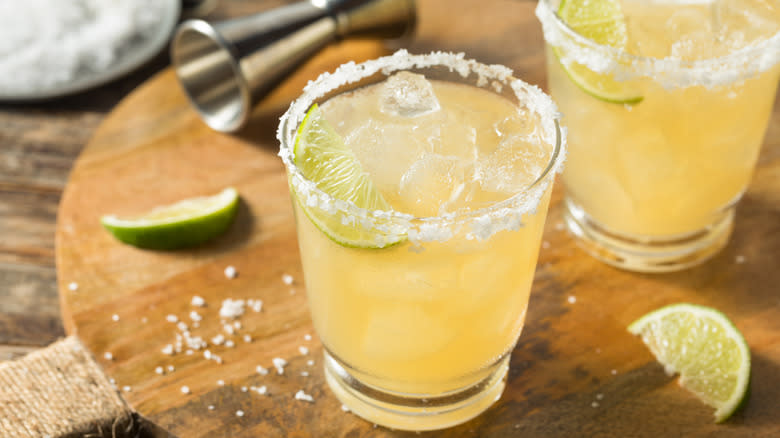
An addendum to using other ready-made drinks -- using a premade sour mix or any other kind of mix is a surefire way to ruin what would otherwise be a decent or great drink. It usually means that you're either in a college bar or a bar that doesn't care about the quality of its cocktails at all.
The point of going out for a drink, after all, is to ostensibly get a better cocktail than one you could make alone at home. Bars that use premade mixes usually have bartenders who don't have the knowledge or experience to make good cocktails on their own and therefore, rely on store-bought ready-made products. Professional bartenders usually have so many cocktail recipes in their heads, as well as enough knowledge of various liquors and flavors to make a great cocktail right on the spot depending on your preferences, that they can create something delicious and incredible with simple "raw" ingredients.
Old Fruit Smell From The Bar Grates
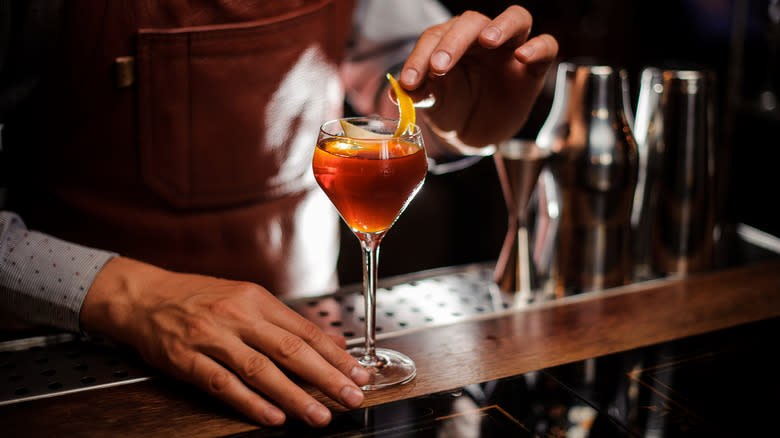
A bartender who had worked in several high-profile bars in LA, like Sunset Marquis and Tenants of the Trees, gave us a tip we hadn't heard much about before. Apparently, if you notice a slightly sour fruit smell by the bar grates, it suggests that the area isn't cleaned nightly, or at least cleaned well.
This is one cleanliness and hygiene indicator we didn't know about. Considering that most cocktails are made on or around these metal grates on the bar, it's important that they're thoroughly disinfected at the end of every shift and prepared for the next day. The fruit smell comes from alcohol and flavorings that have seeped in and soured, creating that sweet, slightly rotten aroma. This also means that there is likely a pool of liquid underneath the grate, creating a very unsanitary situation and breeding ground for even more bacteria.
Spoiled Or Slimy Garnishes
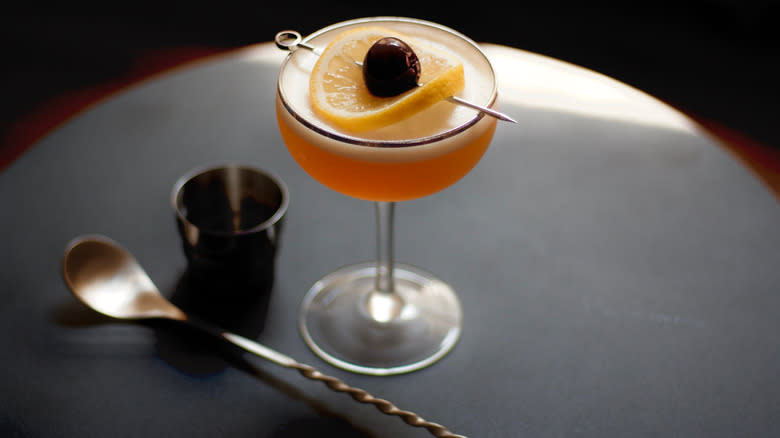
A lot of cocktails are served with a dash or wedge of something for extra flavor. Whether it's a lemon or lime wedge, an orange peel, or some other type of fruity addition, a good cocktail garnish can really bring out some subtler notes of a great drink. However, the state of these garnishes can also sound off the red flag alarm, advises our bartending experts.
Pay close attention to the lemon or lime wedge served with your drink. If it looks a little slimy, it probably means the garnishes have been left overnight, not properly stored, or both. Again, this is an indicator of how attentive the bar staff likely is when it comes to the quality and cleanliness of their products, as well as replacing possible expired products. Sometimes the garnish won't look bad at all, but if you touch the peel with your finger, you will still feel that slight sliminess. Take it as a warning sign, and go somewhere else for your next cocktail.
Static Media owns and operates Tasting Table and Mashed.
Read the original article on Tasting Table

